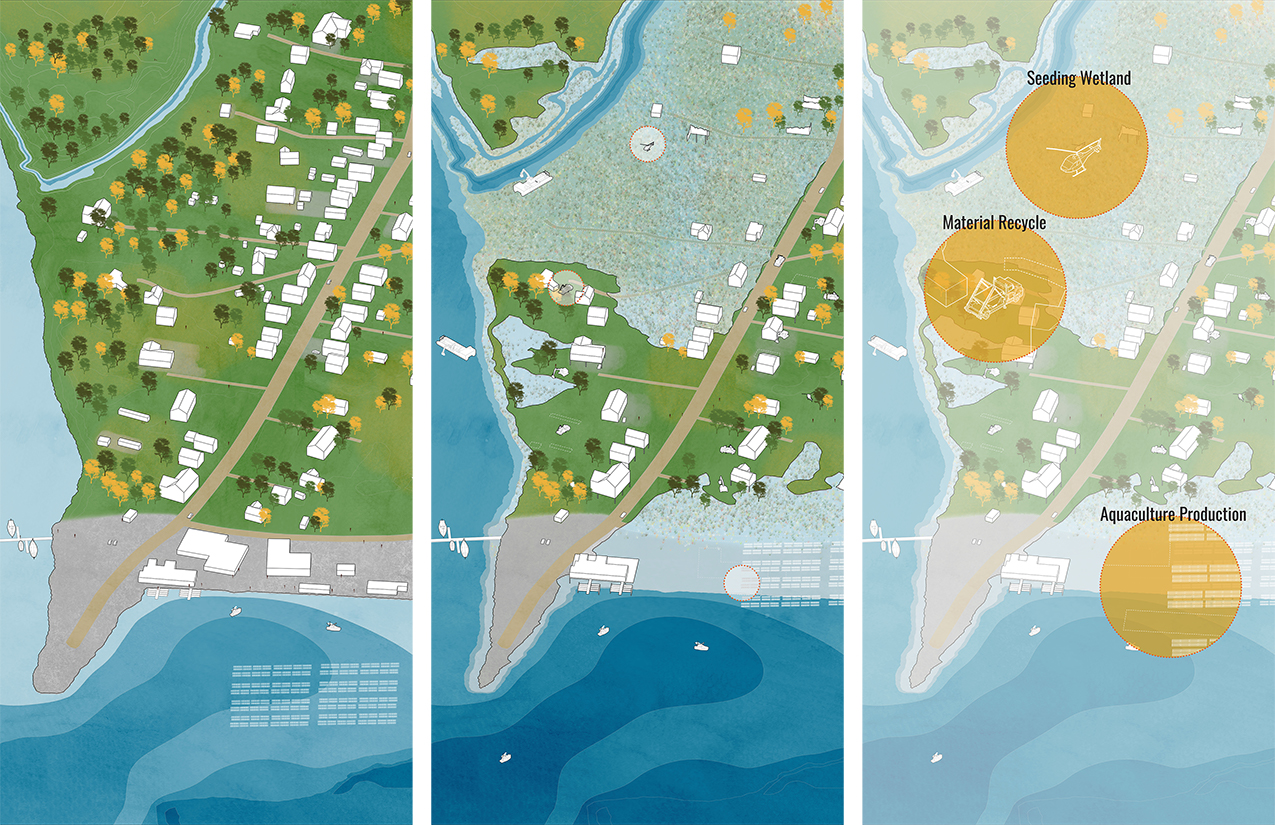Adaptation Handbook
Graduate Thesis
For full explaination, please visit: https://adaptationhandbook.wordpress.com/
Instructor: Bradley Cantrell
Individual Graduate Thesis
Year: 2020, Spring
Location: Eastern Shore, Virginia
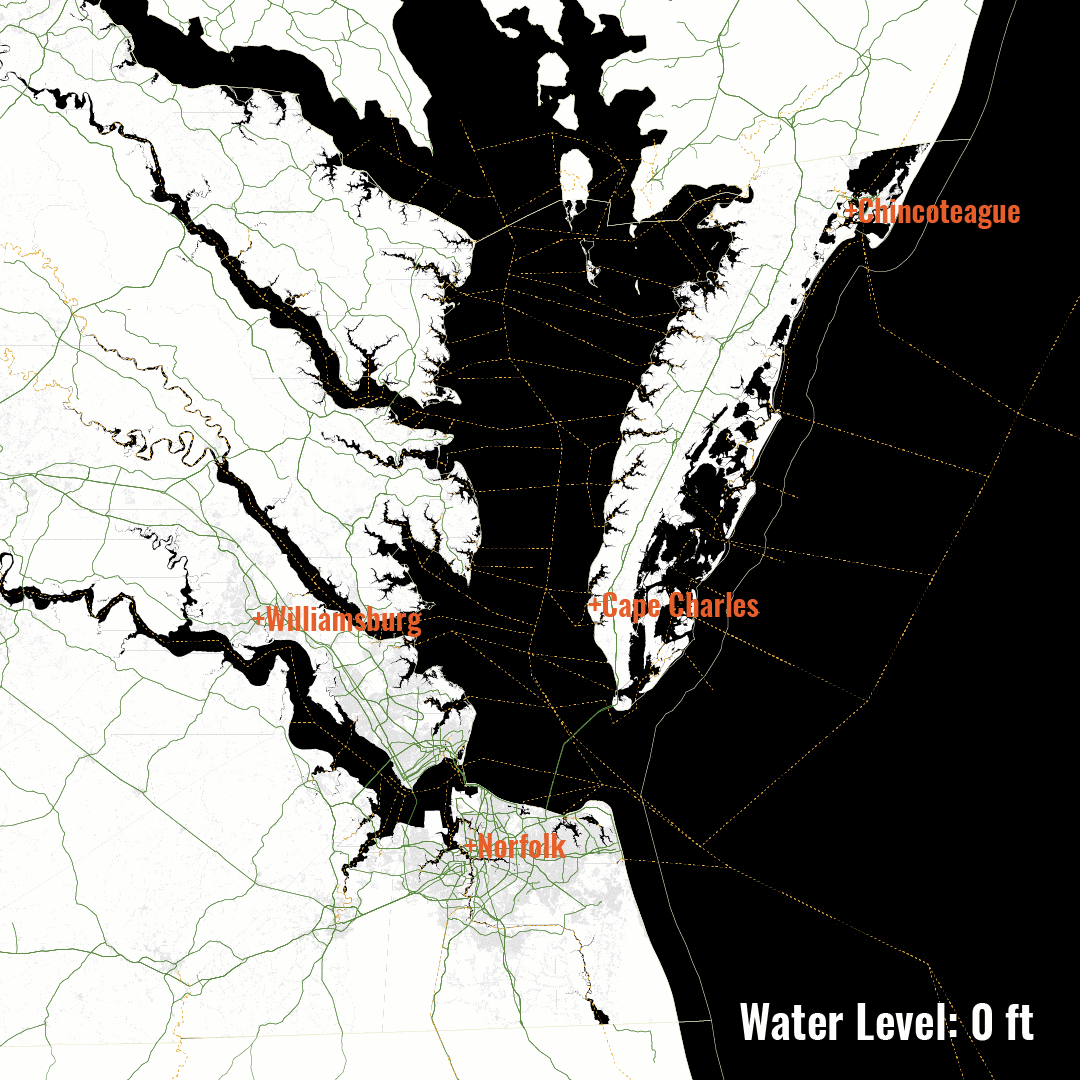

Global sea level has been rising over the past century, and the rate has increased in recent decades. According to NASA’s Fourth National Climate Assessment, relative to the year 2000, sea level is likely to rise 1 to 4 feet by the end of the century. For higher scenarios, a rise exceeding 8 feet by 2100 is physically possible.
Higher sea level means that destructive storm surges will push further inland than they once did, and cause more frequent nuisance flooding, which is estimated to be from 300 percent to 900 percent more frequent within US coastal communities than it was 50 years ago.
Water has always been an essential part in the daily lives of coastal community – whether as a resource which people’s livelihoods depend on, or as a recreational outlet. In recent decades, coastal Virginia has been influenced by rising water in previously unimaginable ways. The level of disruption caused by rising water begs the discussion and awareness about adaptation and relocation. Instead of designing more delaying strategies which keep the urban status quo, it is time to start planning ahead and ask the question, what are we trying to save and how?

American Society of Landscape Architecture has declared climate change as one of the most important advocacies in the profession’s mission. “Landscape architects have the education, training, and skills to lead communities through this crisis to a more sustainable and resilient future. ”
There are already projects underway addressing changing environments in the long term, such as The Rebuilding by Design Competition which encouraged multiple experimental design proposals. However, the majority of these design projects are happening in cities with concentrated critical infrastructure and high population density. Because of the high property value and high level of dependency on amenities in urban areas, the strategies of landscape design were almost all eventually been reduced into coastal protection and living shoreline projects, despite the complexities and innovation shown in the beginning. Moreover, the attention on urban areas renders the suburban and rural region inconsequential in terms of the danger posed by climate change.

The Eastern Shore of Virginia is a peninsula situated between the Chesapeake Bay and the Atlantic Ocean comprising two counties: Accomack and Northampton. The two counties are known for their agriculture and aquaculture production in Virginia. Because of its remote location and separation from other parts of the state, people of the Eastern Shore live, work, recreate, and socialize on their land. For them, the landscapes are not only valuable for their economic and ecologic value, but they are also places of history, emotion, and meaning. When people lose their land to the changing climate and rising sea, they are also losing their culture and identities.
How do we adapt to the changing environment while maintaining our connection with the land? What kind of new relationship can we form with the landscape? This thesis explores how we live with rising sea levels and severe weather through adaptation and relocation through a vision of the future that imagines humanity’s position in a changing environment. “Imaginaries have a double function; they are both an achievable aim and a way to achieve this aim.”
The purpose of this thesis is to provide a possible outcome of climate change on the Eastern Shore, with the hope that these visions can serve as a reference point to foster connection between disciplines, organizations, and communities. This method of starting with a desirable future and working backward to identify required policies, technologies, actors, and spaces is called “backcasting”. It is a common approach used by many disciplines when dealing with uncertainties (other similar concepts include “sociotechnical imaginaries” in Science, Technology, and Society and “fictional expectations” in Economics). When facing an unfathomable challenge such as climate change, imaginaries is the first step to affect real change.
In this vision, I am proposing three principles when adapting to the changing climate:

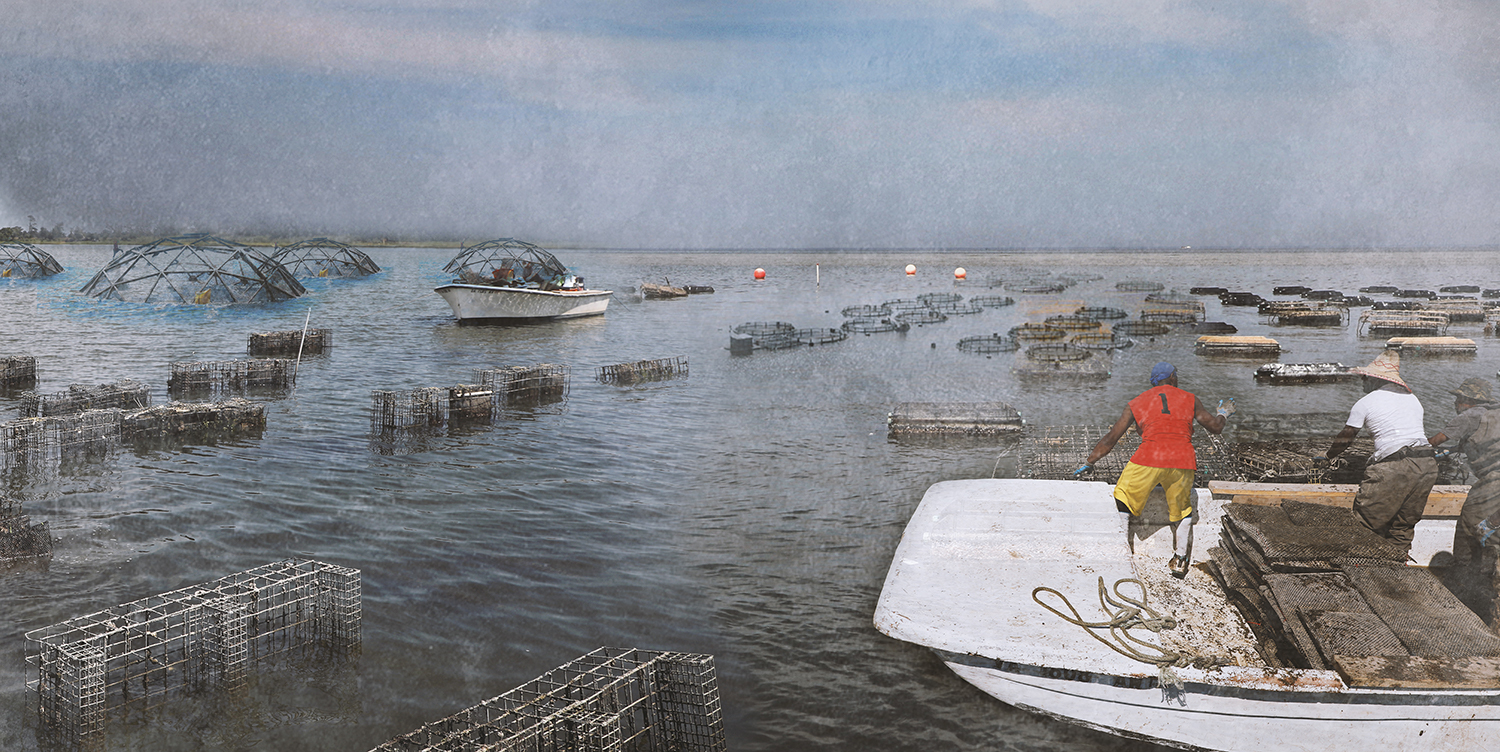

1 Preserve and create wetland habitat
Wetlands are valuable ecosystems that provide habitat for numerous wildlife. On the Eastern Shore, the wetlands in the barrier island are crucial in terms of coastal protection and erosion control. Existing coastal wetland is the first to disappear when sea level rises. To preserve the diverse ecology of Eastern Shore, as well as reduce the risk of storm and flood, we need to give enough space for the wetland to migrate inland.
2 Maintain and manage a productive aquatic landscape
Aquaculture has always been an important part of the people of Eastern Shore for both its economic value and recreation purpose. With climate changing, while more land might be underwater and become unproductive, there is more space for water and aquaculture production. Aquaculture can become both a livelihood and a way of maintaining people’s attachment to the land.
3 Concentrate and connect settlement and resources
Currently, the settlement pattern in Eastern Shore is scattered and distributed. With rising sea level and land loss, concentrated settlement allows people to mutually depend on each other and give space for ecological processes to happen at the periphery of human settlements.
Operation Catalog


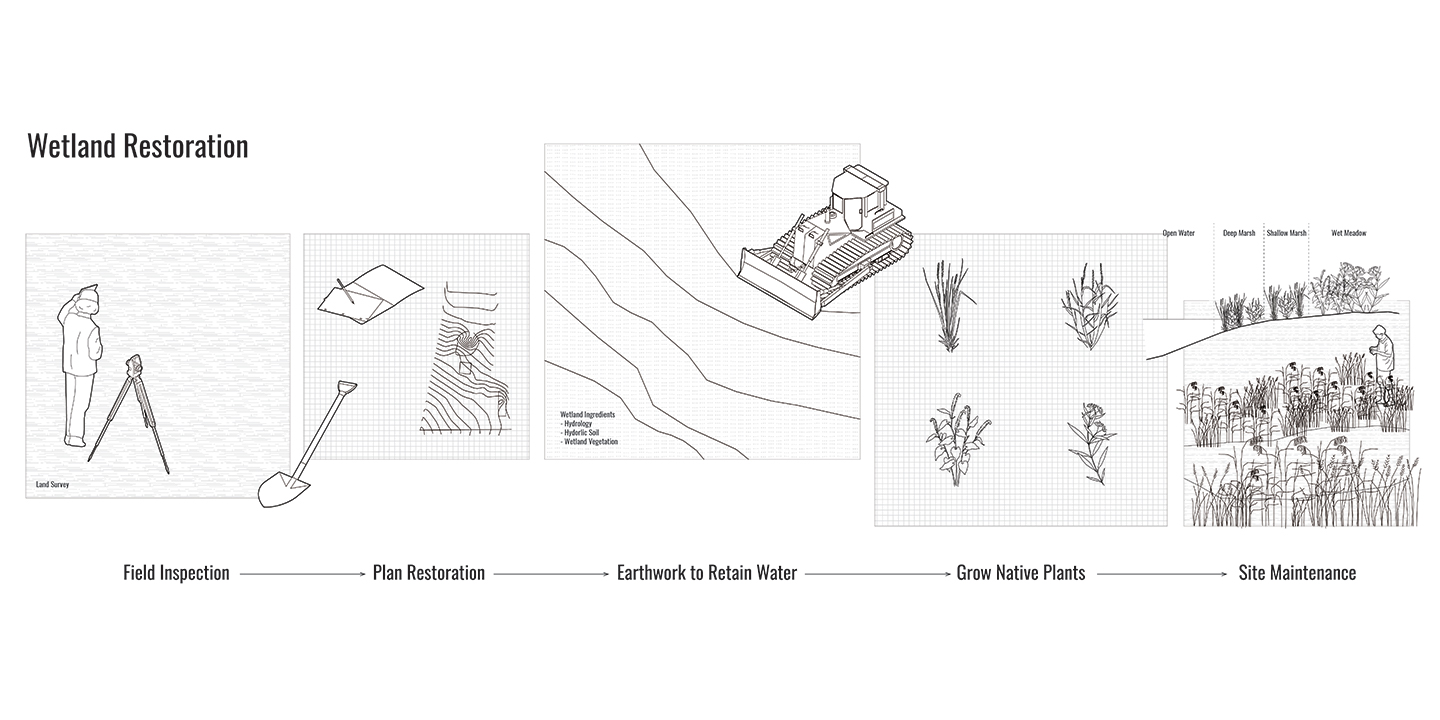
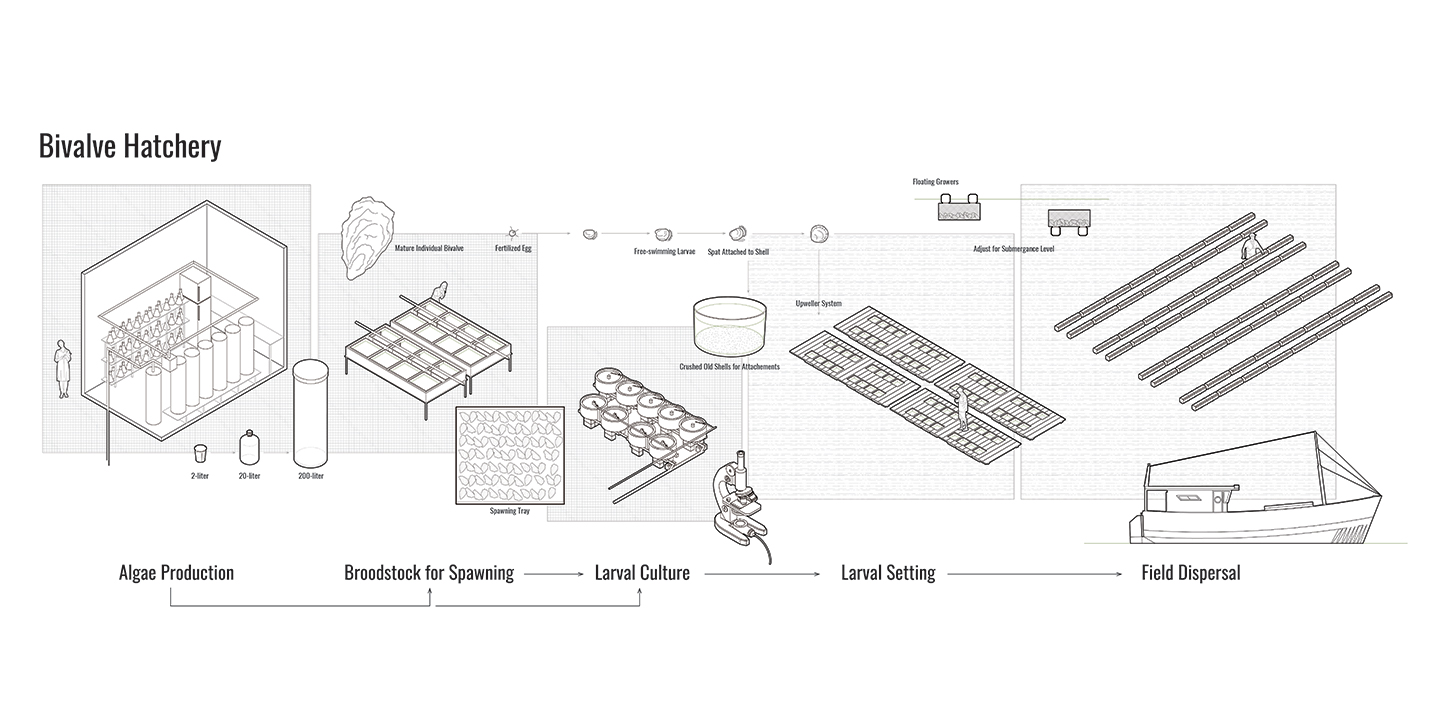
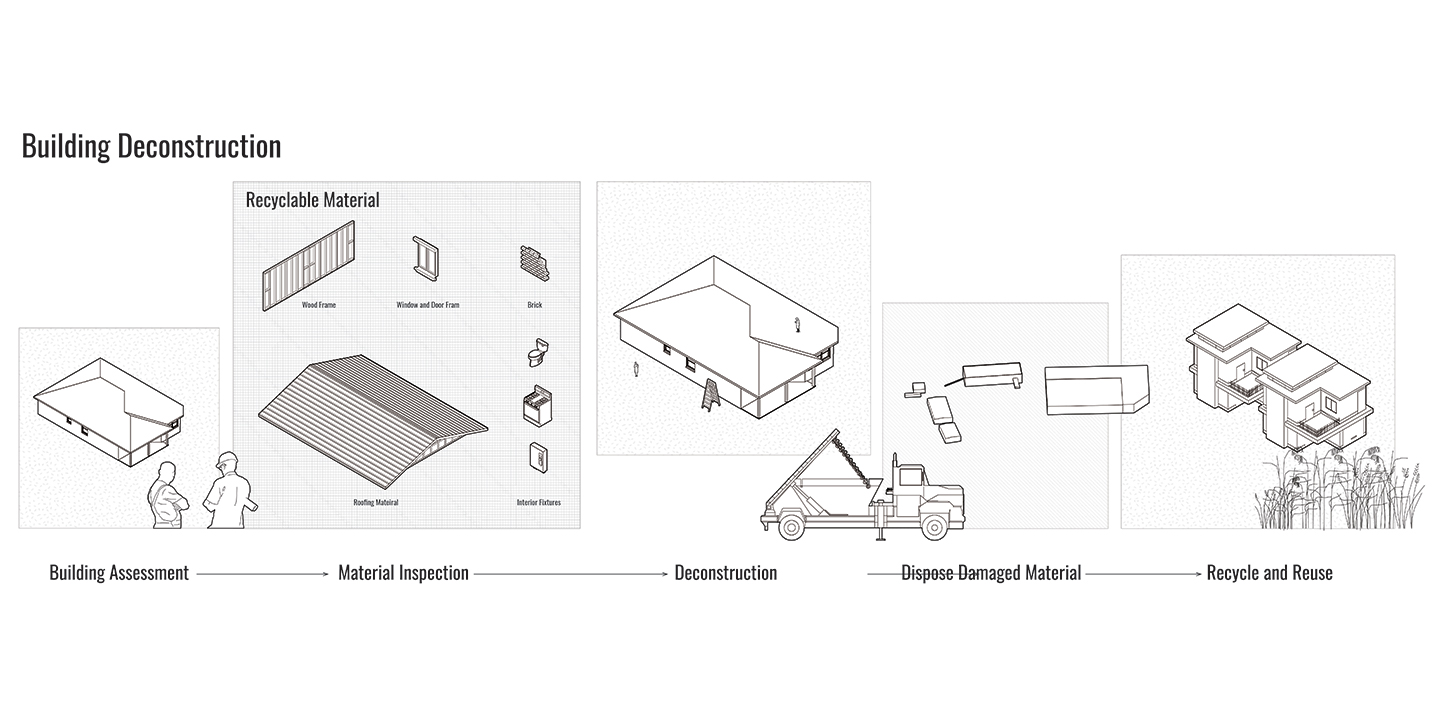
With these shared long-term visions in mind, actors are able to identify specific short-term changes that need to happen in technology, policy, and cultural practices. It can also help people find their places within these future scenarios. Instead of accepting and waiting for the future to happen, more people can actively engage with the decision-making process and actively participate in changing the future.
However, it is still important to acknowledge that the vision is always a variable. The purpose of the vision is not to provide an accurate prediction of the future, but to offer a common ground which people can discuss and tinker. Achieving a desired future scenario is a process that requires constant adjustment. The image of the future is merely the first step. To affect real changes, actors need to work together to issue funding, implement policies, and carry out experiments.
